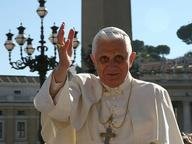Quiz Answer Key and Fun Facts
1. Everybody knows that Saint Peter the Apostle is regarded as the first Pope, but who was the second one?
2. The basic level of church administration in most Christian denominations is the parish. The creation of parishes is attributed to what Pope, who hailed from Bethlehem, Judea, the birthplace of Jesus Christ?
3. The persecution of Christians ended in 313, when Constantine the Great and Licinius signed the Edict of Milan, which allowed Christians to practice freely their religion. Do you remember who was the Pope when the Edict was signed?
4. By the 11th century, the Holy Places were in the hands of the Muslims. The Christian attempts to regain them are collectively known as the Crusades. Who was the Pope and member of the Order of Saint Benedict who initiated the First Crusade?
5. Few historical terms are so notorious as the term "Inquisition" is. Thousands of people were burned at the stake, accused of heresy or witchcraft. Who was the Pope who initiated the practice of the Inquisition?
6. For many scholars the end of the Middle Ages came in 1453, when Constantinople, the capital of the Byzantine Empire, fell to the Ottoman Turks. Who was the Pope when this blow to Christianity fell?
7. Everybody who has studied European history is familiar with the name of Martin Luther, the organizer and leader of the Reformation. But who was the Pope that staunchly opposed the early Protestants and excommunicated Luther in 1521?
8. It was not until the 19th century that many important theses of the Catholic Church were specified and wholly defined. Amongst them was the Dogma of the Immaculate Conception. Who was the Pope that defined the aforementioned dogma and lost the Papal States to Italy?
9. The role of the Vatican in the Holocaust has been long and hotly debated by historians. The same applies to the Pope who reigned when the Second World War commenced. What was his name?
10. The whole world could not believe their ears when a Roman Catholic Pope visited Cuba, a communist nation, in 2000. What was the name of this Pope, whose motto was "Totus Tuus" (totally yours)?
Source: Author
DeepHistory
This quiz was reviewed by FunTrivia editor
agony before going online.
Any errors found in FunTrivia content are routinely corrected through our feedback system.
